-
SQL Installing SSMS
-
SQL Syntax
-
SQL Datatype
-
SQL Database
-
SQL Table
-
SQL Select
-
SQL Distinct
-
SQL Count
-
SQL Top
-
SQL Aliases
-
SQL In
-
SQL Insert
-
SQL Update
-
SQL Null
-
SQL Like
-
SQL Wildcards
-
SQL Nested Query
-
SQL Between
-
SQL Unique
-
SQL Primary Key
-
SQL Foreign Key
-
SQL Check
-
SQL Default
-
SQL Database Diagram
-
SQL Stored Procedures
-
SQL Joins
-
SQL Inner Join
-
SQL Left Join
-
SQL Right Join
-
SQL Full Join
-
SQL Trigger
SQL Inner Join
INNER JOIN in SQL is the most common and important type of join which allows users to access matching data from two or more tables. When the join condition is met between the tables, then it returns all the common rows from them.
The Venn diagram of INNER JOIN is shown in the following picture. The shaded region of the Venn diagram shows the intersection values of two tables:
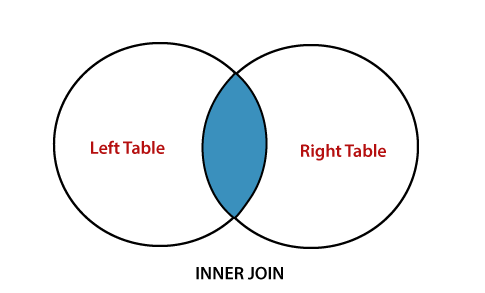
Example:
SELECT Column_Name1, Column_Name2, ….., Column_NameN
FROM Table_Name1 INNER JOIN Table_Name2
ON Table_Name1.Column_Name = Table_Name2.Column_Name;
Let’s take two tables named Employee_Details and Department to understand the concept of INNER JOIN. The Employee_Details table contains Emp_ID, Emp_Name, Dept_ID, and Emp_Salary columns. The Department table contains Dept_Id and Dept_Name columns.
We can check the data of Employee_Details and Department table using the following two different queries:
SELECT * FROM Department;
Output:
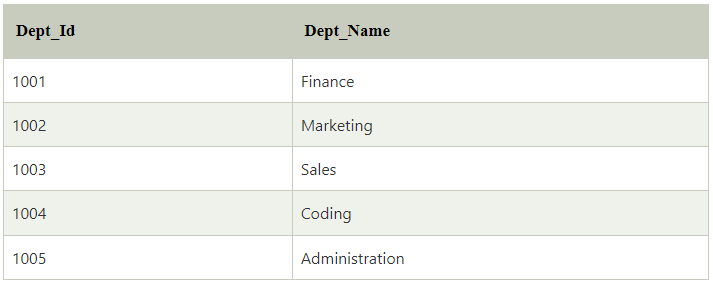
SELECT * FROM Employee_Details
Output:
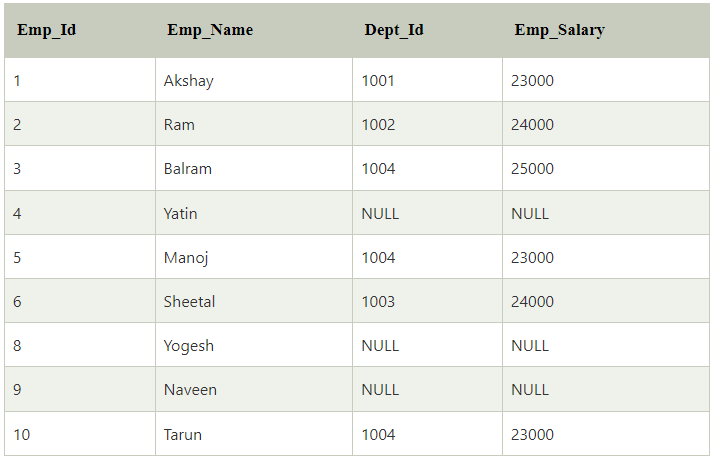
The following query joins these above two tables using INNER JOIN in structured Query Language:
SELECT
Employee_Details.Emp_Id,
Employee_Details.Emp_Name,
Department.Dept_Name,
Employee_Details.Emp_Salary,
FROM Department INNER JOIN Employee_Details
ON
Department.Dept_ID = Employee_Details.Dept_ID;
Explanation of above INNER JOIN query:
This query joins the Employee_Details and Department table and accesses the records from both the tables where Department.Dept_Id = Employee_Details.DeptId.
It only fetches the details of those employees from both the tables whose Dept_Id in the Employee table matches with the Dept_Id of the Department table.
If the Dept_Id is NULL or does not match, then that row will not show in the output.
Output:
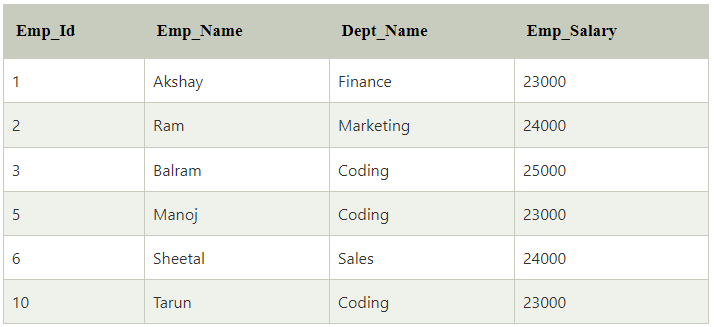
Course Video
NOTE: Practice below questions on site editor.
1. Write a SQL query to get employeeID, Job title, firstName, MiddleName, LastName and title from Person and HumanResources.Employee tables.
NOTE: OUTPUT on SQL Editor Count: 100 Rows.
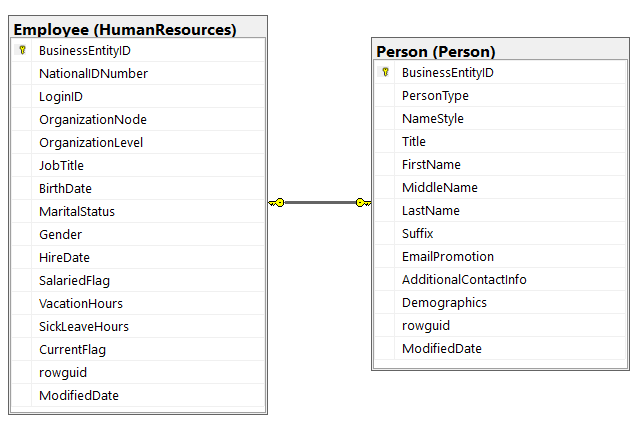
Output
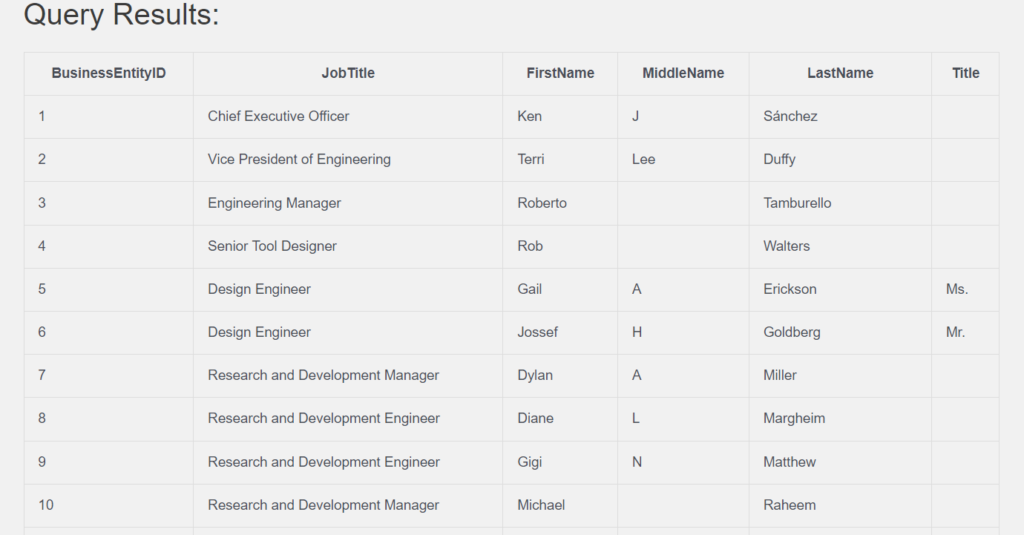

2. Write a SQL query to get employeeID, Job title, firstName, LastName and startDate from Person, HumanResources.Employee and HumanResources.EmployeeDepartmentHistory tables.
NOTE: OUTPUT on SQL Editor Count: 100 Rows.
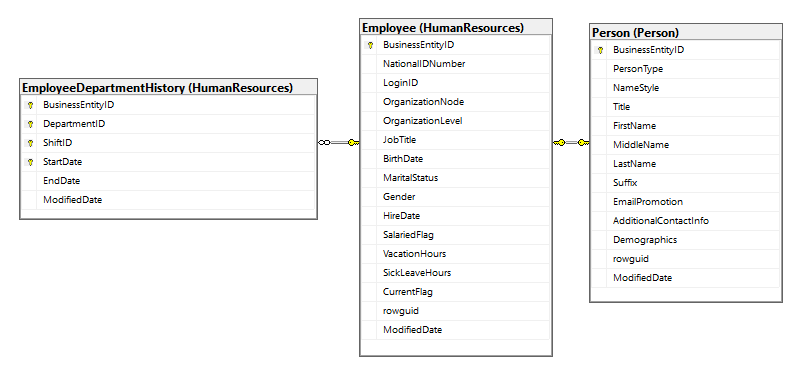
OUTPUT
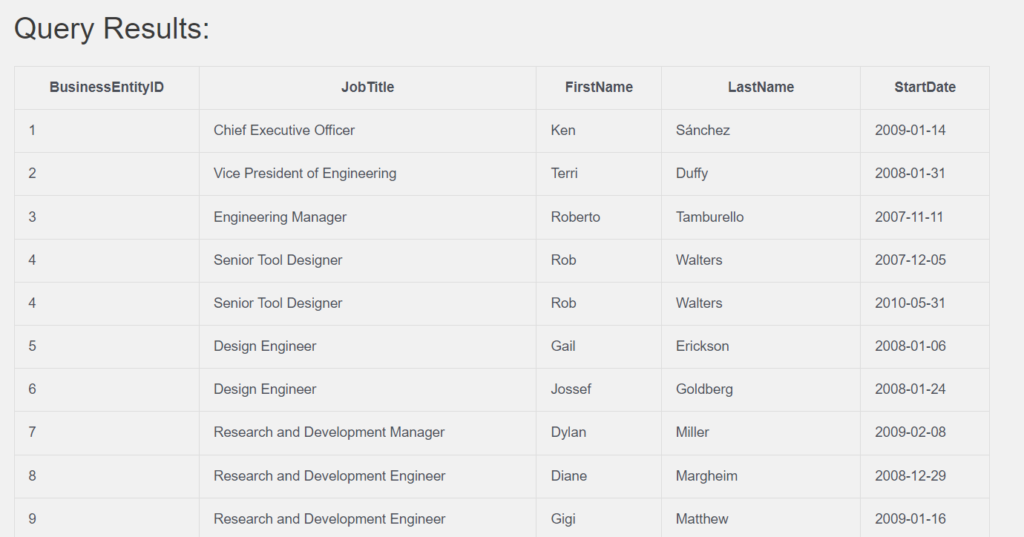

3. Write a SQL query to get employeeID, Job title, firstName, LastName, departmentName, department groupName, startDate from Person, HumanResources.Employee, HumanResources.EmployeeDepartmentHistory and HumanResources.Department tables.
NOTE: OUTPUT on SQL Editor Count: 100 Rows.
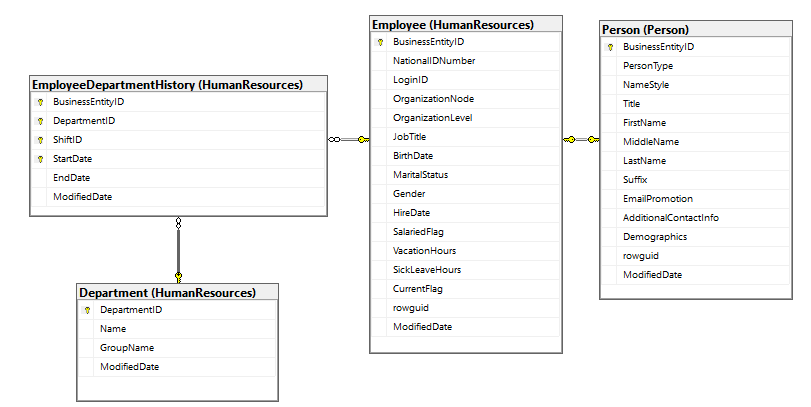
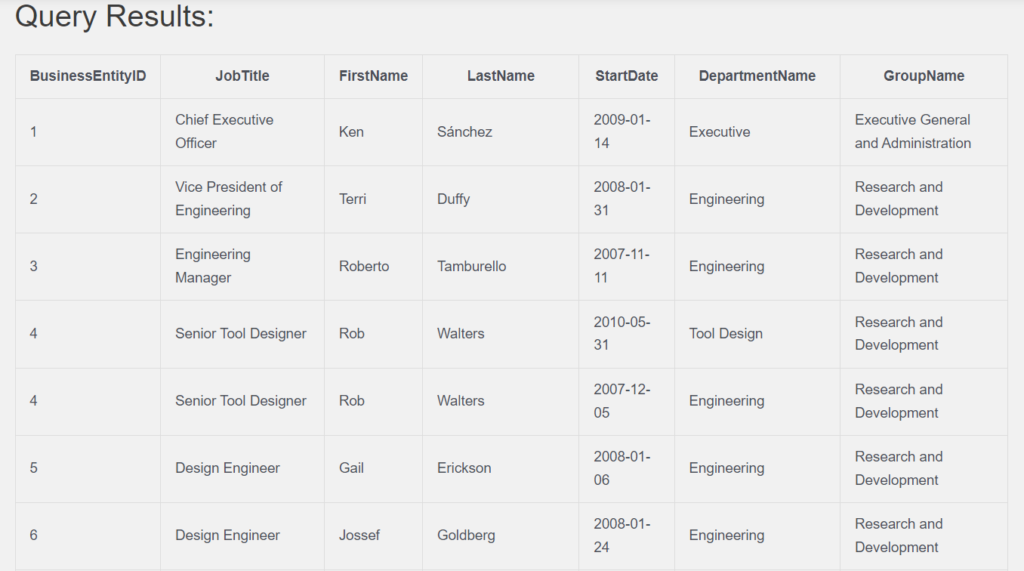

4. Write a SQL query to get customerID, storeId, StoreName, SalesPersonID, salesQuota, bonus from Customer, Sales.Store and Sales.SalesPerson Tables.
NOTE: OUTPUT on SQL Editor Count: 4 Rows.
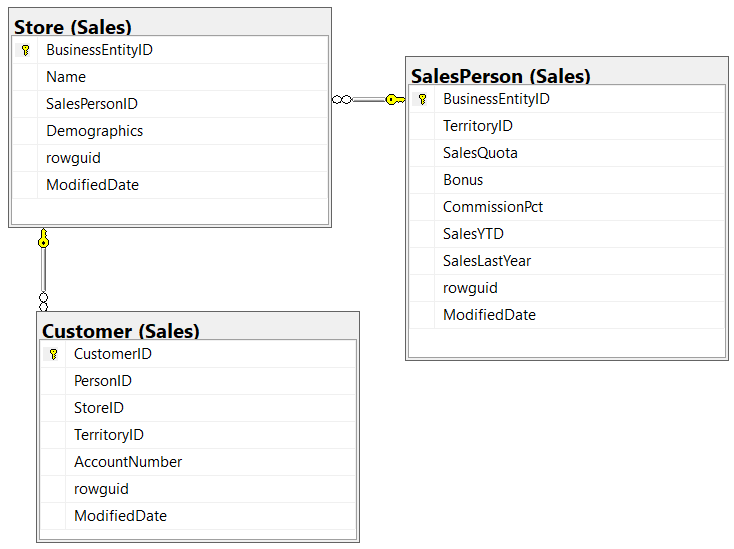
OUTPUT
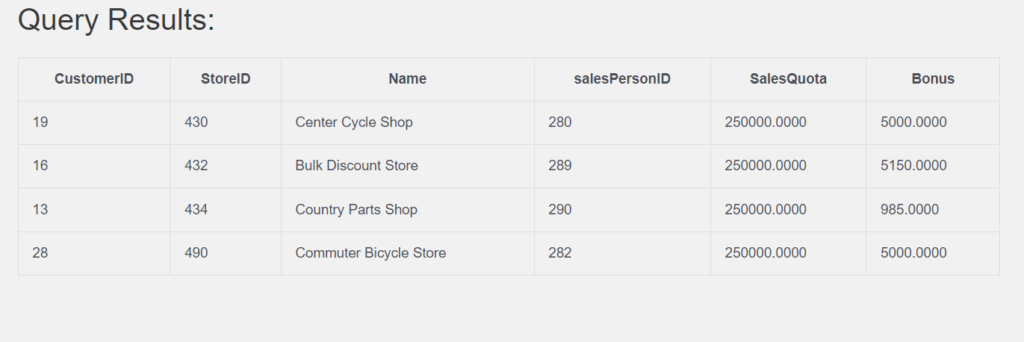

5. Write a SQL query to join SALES.CUSTOMER, SALES.STORE, SALES.SALESPERSON AND SALES.SALESTERRITORY TABLES to retrieve two columns from each table.
NOTE: OUTPUT on SQL Editor Count: 4 Rows.
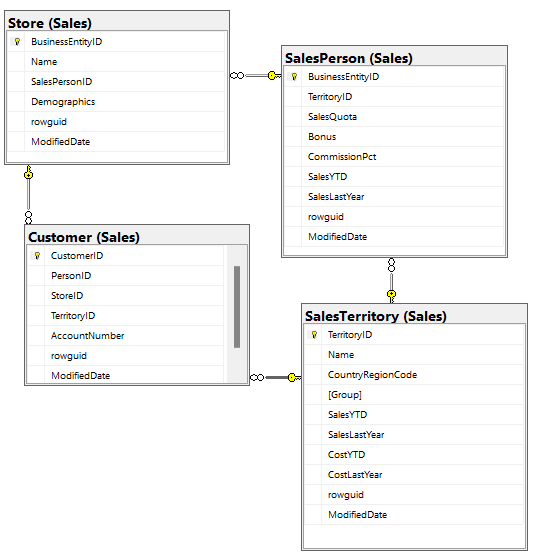
OUTPUT


YouTube Reference:
1) SQL Inner Join in Hindi/Urdu
2) SQL Inner Join in English


